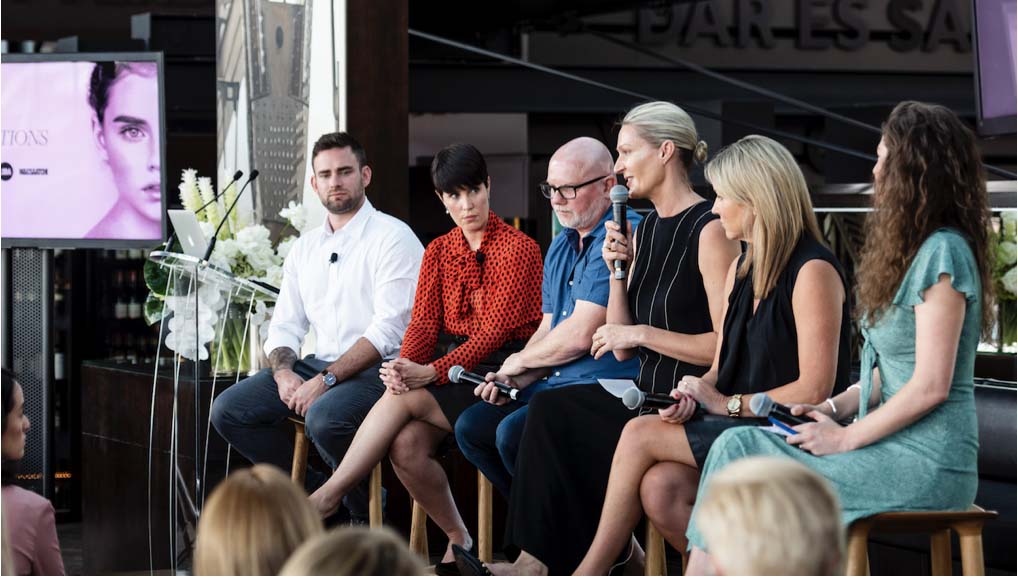The Weekly partners with M&C Saatchi’s LIDA to ask: has advertising to women really moved on?

Ahead of 2019 International Women’s Day, The Australian Women’s Weekly reveals the results of a unique new data driven project and asks, has advertising to Australian women really moved on?
The Weekly partnered with M&C Saatchi’s customer experience and data specialists LIDA to examine the way brands have advertised to Australian women over the past eighty years. A purpose-built AI bot scanned and analysed over 20,000 advertisements from the pages of The Weekly. The results revealed the categories, brands, language and images used to advertise to women over the decades.
At a breakfast in Sydney to present the findings, Editor-in-Chief of The Weekly Nicole Byers challenged marketers to better answer the needs of Australian women.
“Advertising has come a long way but the findings present a great opportunity for reflection and conversation by the marketers of today. Particularly alarming is the omission of wealth, work, and technology from the lives of Australian women represented in advertising – with less than 4% of the ads measured categorised in these fields. We know how important these topics are for women and our content reflects that.”
Key takeouts from the research include:
1. Up until the 1980s, the word ‘man’ appeared more often in ads to women, than the word ‘woman’ did.
2. The word ‘career’ didn’t feature in advertising to women until the 1990s, significantly lagging behind women’s actual participation in the workforce.
3. Since the 1980s, car advertising to women has dropped 85%, even though women today influence over 80% of car purchases.
4. While Australia has become increasingly multicultural, the first ad to feature a non-white Australian appeared in 1994 – just 25 years ago.
5. As soon as Australian women were allowed into pubs in 1961, alcohol advertising to women doubled.
6. While female incomes have increased dramatically since the 1970s, financial services advertising to women has remained notably absent.
With its eight-decade heritage as the voice of Australian women, The Weekly was the ideal platform with the ability to showcase how marketers have represented the female consumer and the cultural changes over this time. LIDA’s “Minnie” AI bot has become the largest database of advertising to women in the world.
Says Victoria Curro, Managing Director of LIDA: “If the consumer economy had a sex, it would be female. Women drive 70-80% of all consumer purchasing through a combination of their buying power and influence, and women are the fastest growing global consumer economy. Understanding what really matters to women and staying in step with the changes in their lives does pay dividends – for both marketers and society as a whole.”
Australia’s no. 1 publisher to women, Bauer Media, is committed to driving a more equal Female Future via impactful campaigns and change making decisions. This latest project in partnership with M&C Saatchi is a key example of the publisher’s continued investment and commitment to Female Futures using ‘best-in market’ insights to better reflect a more accurate representation of women through advertising and popular culture.

5 Comments
You’ve come a long way, baby.
And almost every ad for women objectifies men.
https://adstandards.com.au/cases/2010/May?ref=0203/10
Love it.
While I totally agree that women are patronised in advertising, it’s always seemed to me the most patronising messages come from the beauty and fashion sector – decades worth of womens magazines created, by and large, by female editors. And the whole beauty industry and fashion industry is dominated by women creating advertising and PR aimed at other women. Shouldn’t women take some of the responsibility for creating these pressures, expectations and attitudes women face?
Replying to but Also:
As the relentless ‘Blame Men for Everything’ war continues, a large part of the conversation missing is the acknowledgement of the sheer nastiness of women against fellow women, especially in business, life and schools (case in point, my daughter is being bullied by a group of girls – nothing worse than your daughter being picked on and knowing there’s bugger all you can do about it).
While men tend to be upfront and (frankly) dicks at times, women tend to be vicious and nasty out of sight. Something that all women will agree with, and if they don’t, then they’re in denial.
Alas, this conversation won’t happen. At least not yet.
We’re still in the bloodletting phase.
In the meantime, women will be women.
Let the hate begin…
Happy Women’s Day. Nothing will change.
Bang on ‘Calling it’. It’s such a double standard.